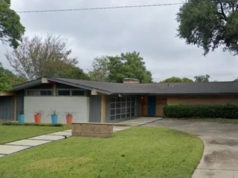On Tuesday, Sept. 18, Fort Worth City Council will vote on a new budget, one that includes a 25 percent cut in funding for the Arts Council of Fort Worth and Tarrant County. A nonprofit agency that disperses taxpayer money to more than 40 local arts and cultural organizations, including the Modern Art Museum of Fort Worth, Fort Worth Opera, and Texas Ballet Theater, the nearly 50-year-old arts council might see its annual budget shrink by nearly $267,000 to $799,691. Over the past five years, the arts council’s budget has been reduced by nearly 50 percent.
The arts council is not pleased and is urging arts-loving citizens to voice their opposition to the proposed cuts at a public forum at council chambers (1000 Throckmorton St., downtown) on Tuesday, Sept. 11, at 7 p.m. The arts council wants its current level of funding maintained by using funds from a $10 million surplus in the city’s Culture and Tourism Fund, a reserve fueled partially by hotel taxes.
The arts council argues that slashing arts funding is simply bad economics, the agency’s defense supported by a new study released by the advocacy group Americans for the Arts. Conducted in 2010, a period referred to as the Great Recession, Arts & Economic Prosperity IV drew data from across the country, including from Dallas, McKinney, and Tarrant County, and revealed that the economic impact of the arts in Tarrant County was $84,000,000.
That’s nothing to sneeze at, but Tarrant County arts supporters must realize that that $84 mil could be just the tip of the iceberg.
Of Tarrant County’s nearly 100 eligible nonprofit arts groups, only 40 participated in the study, and some of them –– including the Kimbell Art Museum, Amon Carter Museum of American Art, and TBT –– are huge, meaning that the nonprofit arts’ economic impact here is probably two- to three-times the reported $84,000,000. For evidence, all a local arts supporter has to do is look around the country.
With a population of 1,789,900 in 2010, Tarrant County nonprofit arts groups spent about $40,000,000 and their audiences spent approximately an additional $5,000,000, for an economic-activity grand total of about $85,000,000. By comparison, the 808,466 arts lovers and groups of Indianapolis managed to generate about $384,000,000 for their city, nearly five times as much as Tarrant County, and the 665,027 arts lovers and groups of Jefferson County, Ala. (greater Birmingham), whipped up about $235,000,000 for their area, about three times as much as Tarrant.
Anyone who’s lived in Tarrant County long enough and has enjoyed its arts scene knows that, with all due respect, Indy and Birmingham ain’t no Fort Worth and that had all 99 of Tarrant County’s eligible arts groups participated in the study, the overall economic impact here would be far, far greater than that mere $84,000,000.
Local arts supporters, especially when presenting to city council, can’t get hung up on that low number.
The Arts Council of Fort Worth and Tarrant County has started an online petition for budget-cut opponents.













I will be at that meeting (and leave a cardboard cut out of myself at the Nicholas Nixon lecture at the Modern Art Museum, Fort worth, cos its at the same time.)! I’d like to know what committee proposed this cut and weather or not they considered the economic impact of the arts in their voting district and on the city in general. I’ll be proposing that they cut one day from the weekly trash pickups and encourage everyone to recycle to reduce their garbage output, saving the city tons of fuel cost that can be added to the budget! AND we’d get kudos for being badasses because Fort Worth Recycles!
In terms of per capita arts spending, Fort Worth (94 cents per person) is the dumps. Of course, every major city in the state (Houston, Dallas, San Antonio, Austin, El Paso) spends more per capita than Fort Worth. But even towns –– not even cities, towns –– such as Plano, Irving, Richardson, and Lewisville spend more per person on the arts than Fort Worth, a city whose arts lovers and producers like to think of themselves as at the vanguard of high culture and the fine arts not only in Texas but in the entire Southwest.
Garland is the only place that spends less per capita on the arts than Cowtown. (Where is Garland?)